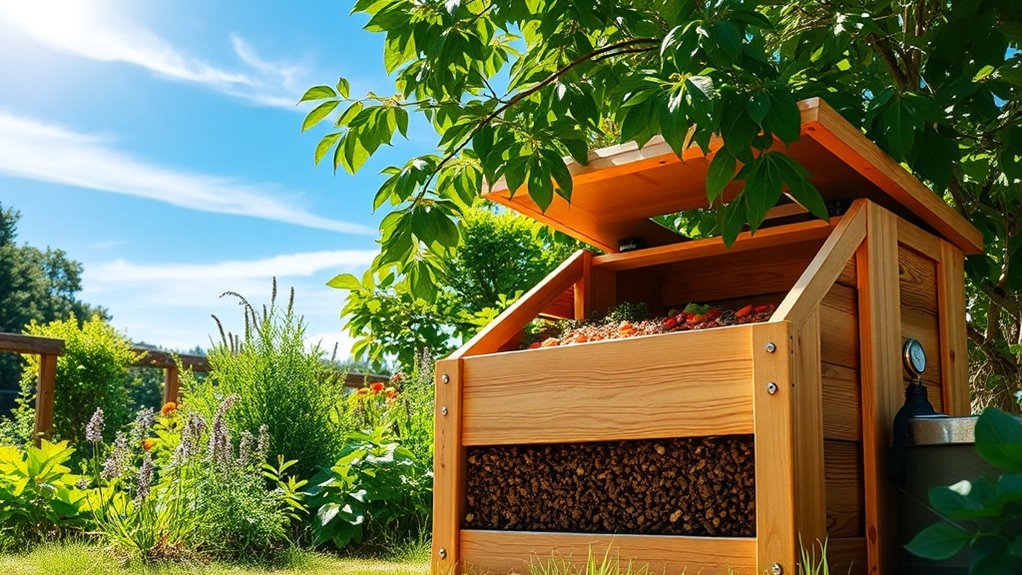The Easiest Way to Start Composting Without the Smell
If you’re looking to start composting without the unpleasant odors that can sometimes arise, understanding the balance of materials is crucial. By combining carbon-rich browns with nitrogen-rich greens in the right proportions, you can create a pleasant composting experience. Regular turning of the pile and moisture control also plays a significant role. Let’s explore how to set up your composting system effectively while avoiding the common pitfalls that lead to smell.
Understanding the Basics of Composting
Composting, while seemingly straightforward, involves understanding several critical components to ensure its effectiveness and minimize odors.
You need to balance greens, rich in nitrogen, with browns, high in carbon. Proper aeration also plays a vital role; turning your compost regularly helps maintain airflow.
Keep moisture levels in check, too; aim for a damp, but not soggy, mixture to promote healthy decomposition. Additionally, incorporating microorganisms and decomposers into your compost can significantly speed up the breakdown process and help manage any unpleasant odors.
Choosing the Right Compost Bin
Selecting an appropriate compost bin is vital for a successful composting experience and helps control odors. Consider factors like size, material, and aeration. Here’s a quick comparison to guide your decision:
| Bin Type | Pros |
|---|---|
| Tumbler | Quick decomposition |
| Stationary Bin | Affordable, easy access |
| Worm Bin | Efficient for small spaces |
Choose wisely to maximize efficiency! Additionally, avoiding common composting mistakes can significantly enhance your composting success.
What to Compost: Materials That Won’t Smell
A balanced compost pile begins with the right materials, and choosing those that won’t produce odors is essential for maintaining a pleasant composting experience.
Use carbon-rich materials like dry leaves, straw, and shredded paper, which help absorb moisture. You can also include vegetable scraps, coffee grounds, and eggshells. Additionally, incorporating small-space solutions can enhance your composting efforts even in limited areas.
Avoid high moisture or protein-rich items to prevent unpleasant smells from developing.
Maintaining Your Compost Pile for Odor Control
To effectively control odors in your compost pile, you need to pay attention to key maintenance practices.
Regularly turn your pile to aerate it, ensuring oxygen reaches all materials.
Balance green and brown materials to maintain proper nitrogen levels.
Keep the moisture content just right; it shouldn’t be too wet or dry.
Troubleshooting Common Composting Issues
While composting can seem straightforward, various issues may arise that can hinder the process.
If your compost smells, it might be too wet or lacking airflow. Ensure you balance greens and browns, and turn the pile regularly.
For slow decomposition, chop materials smaller and add nitrogen-rich items.
Watch for pests; covering your compost or using a closed bin can help minimize them effectively. Additionally, applying smart composting practices such as layering can enhance the airflow and accelerate breakdown.

